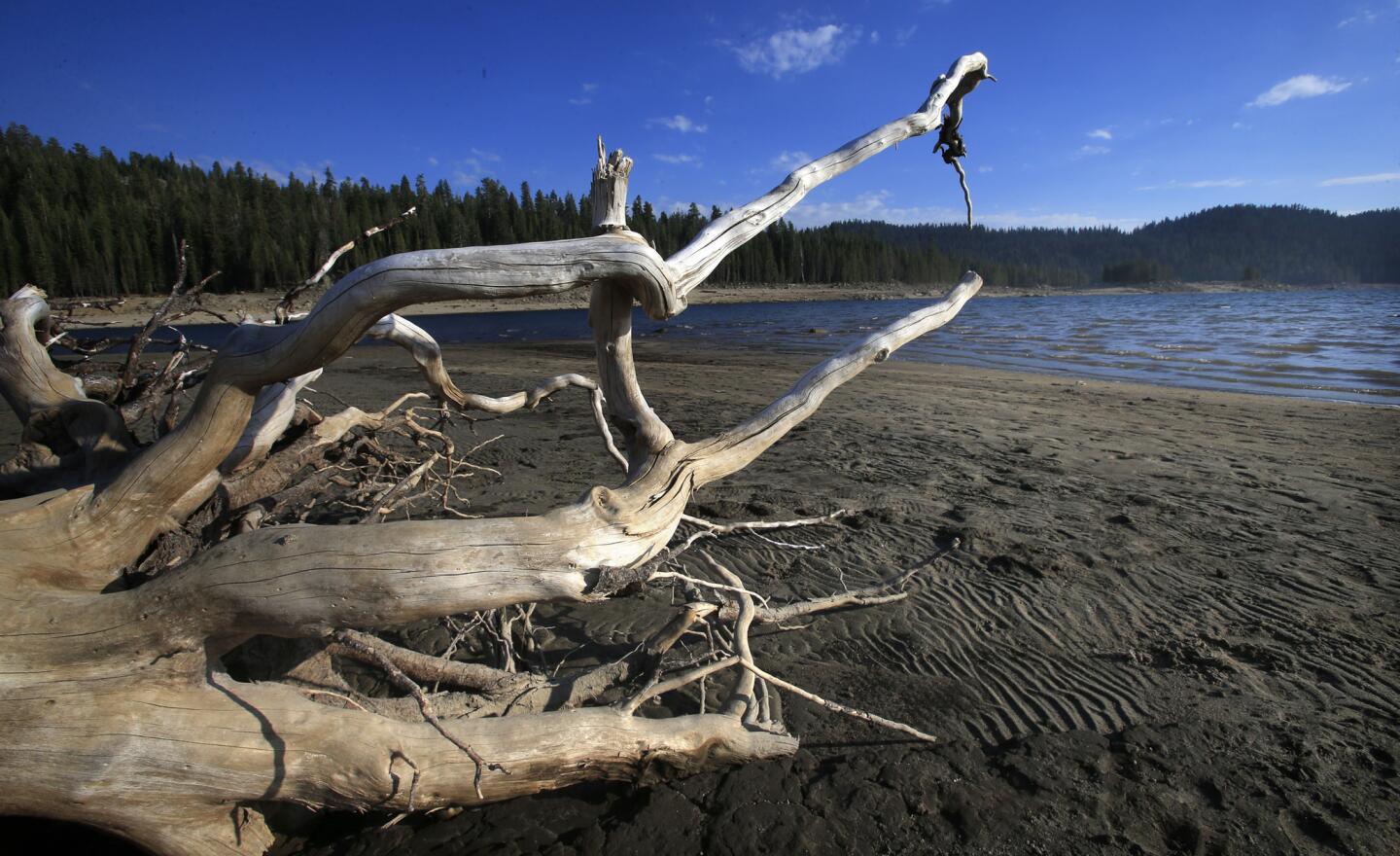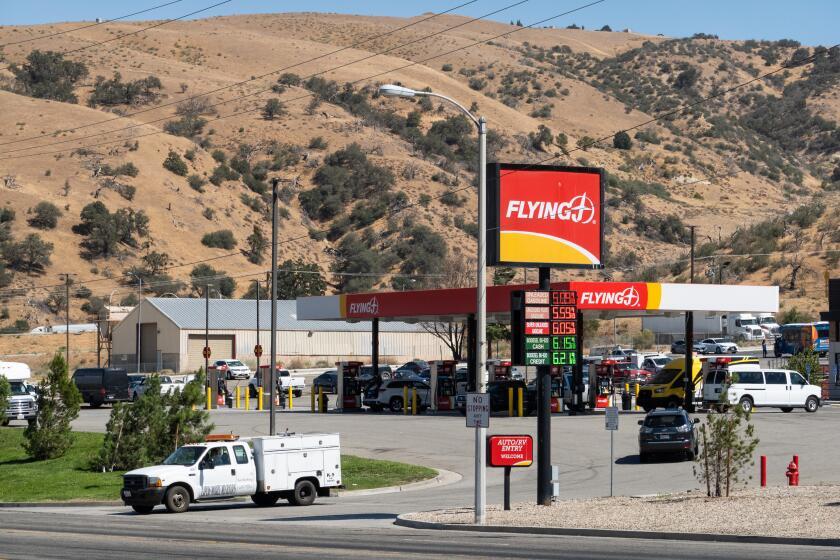The Sierra snowpack -- which provides most of California’s drinking water -- was at 32% of its average annual depth this winter. Now the state’s largest reservoirs are less than half-full.
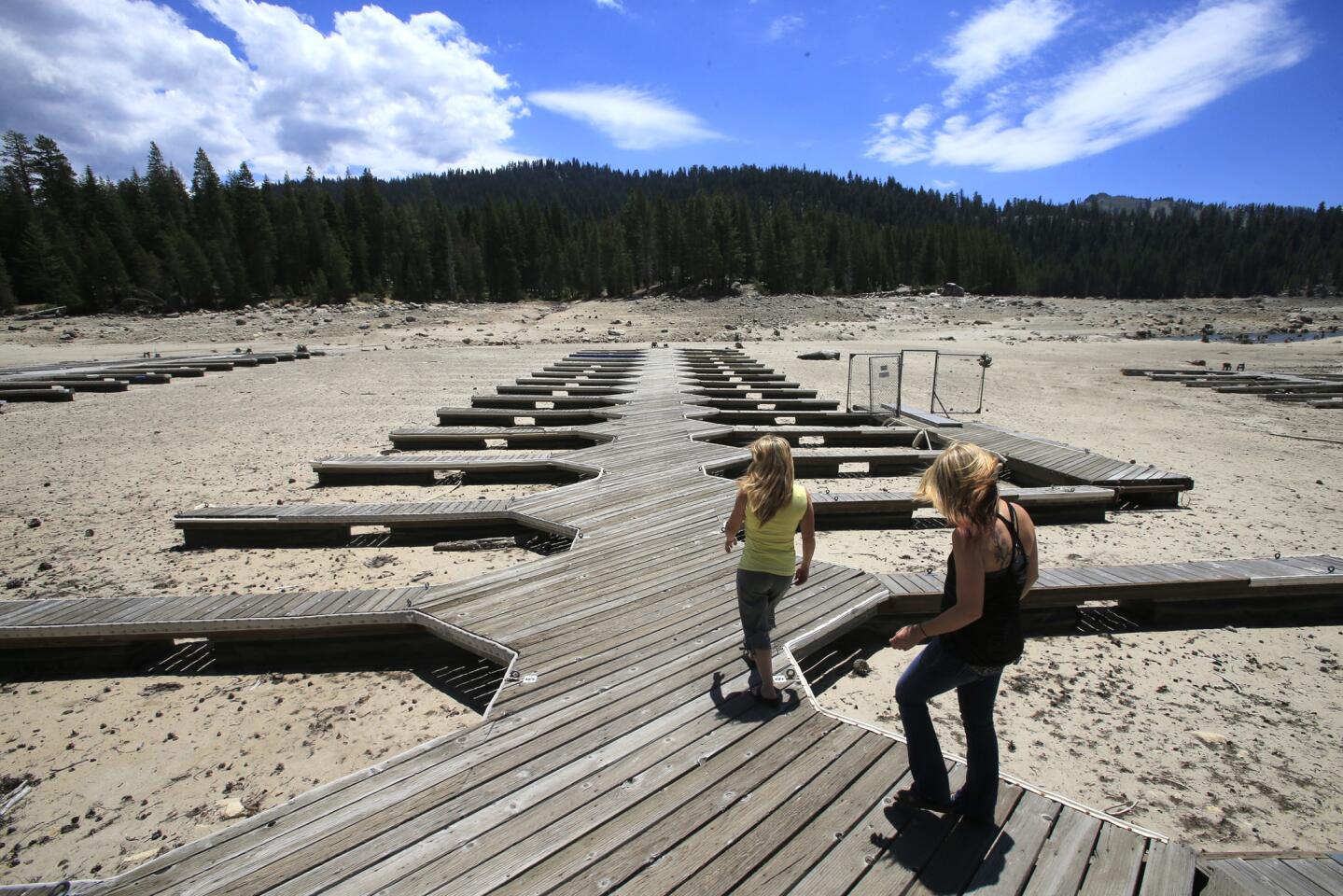
Elaine Newton and daughter Ashleigh on their family’s Rancheria Marina docks, left high and dry by the drought. (Mark Boster / Los Angeles Times)
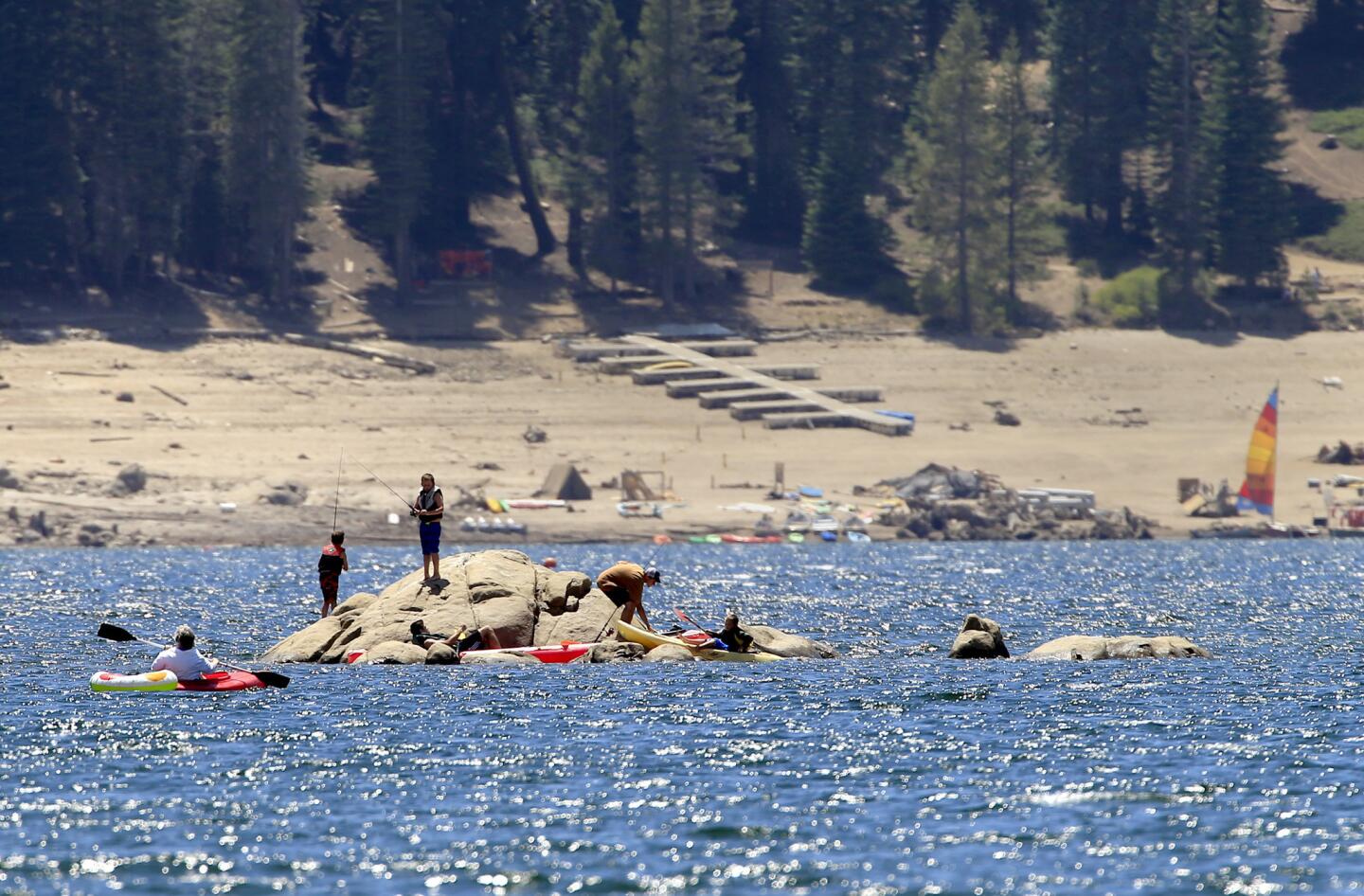
Huntington Lake northeast of Fresno is drawing far fewer visitors in its diminished state. (Mark Boster / Los Angeles Times)
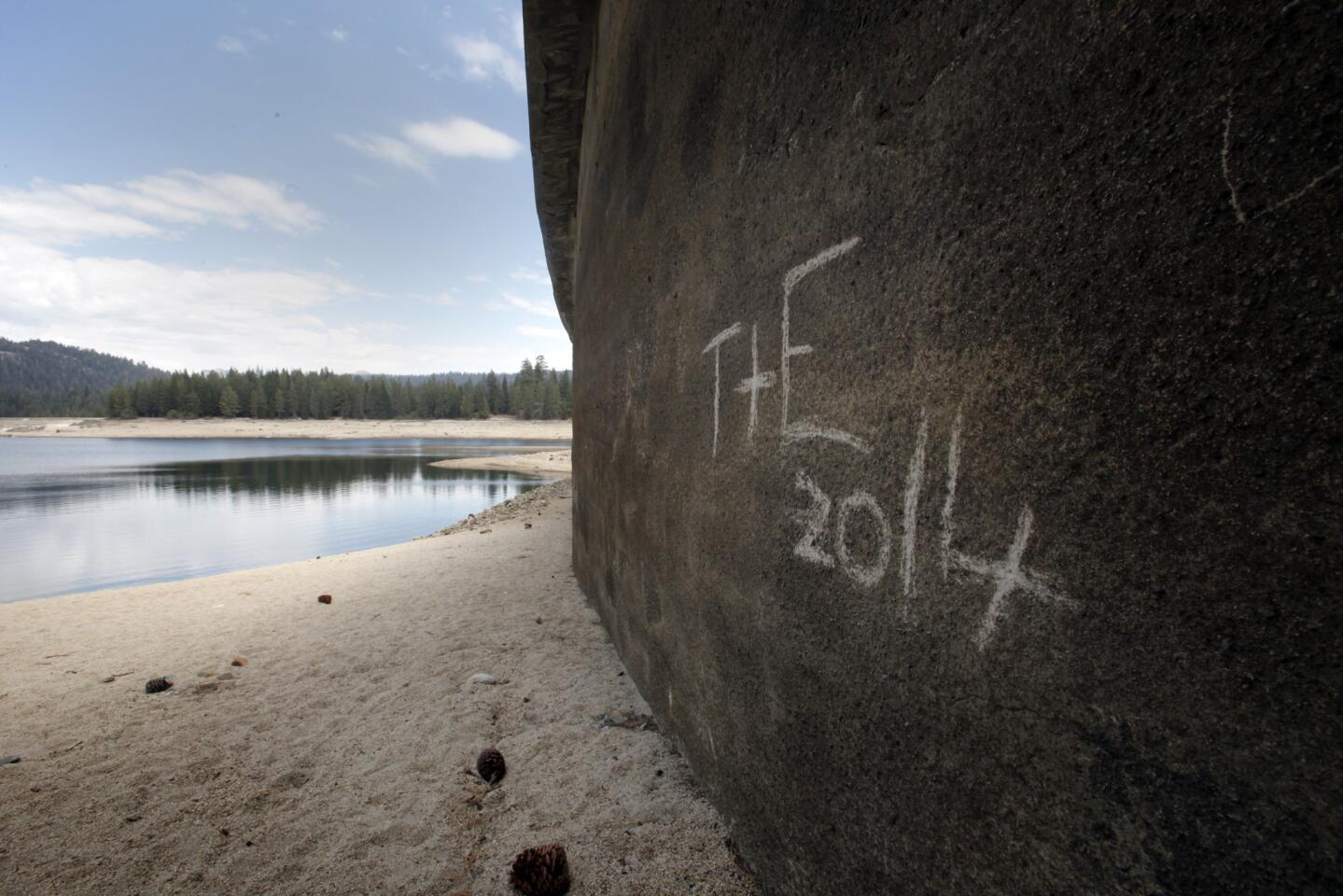
Someone has scrawled the year on the exposed wall of one of the dams at Huntington Lake. (Mark Boster / Los Angeles Times)
Advertisement
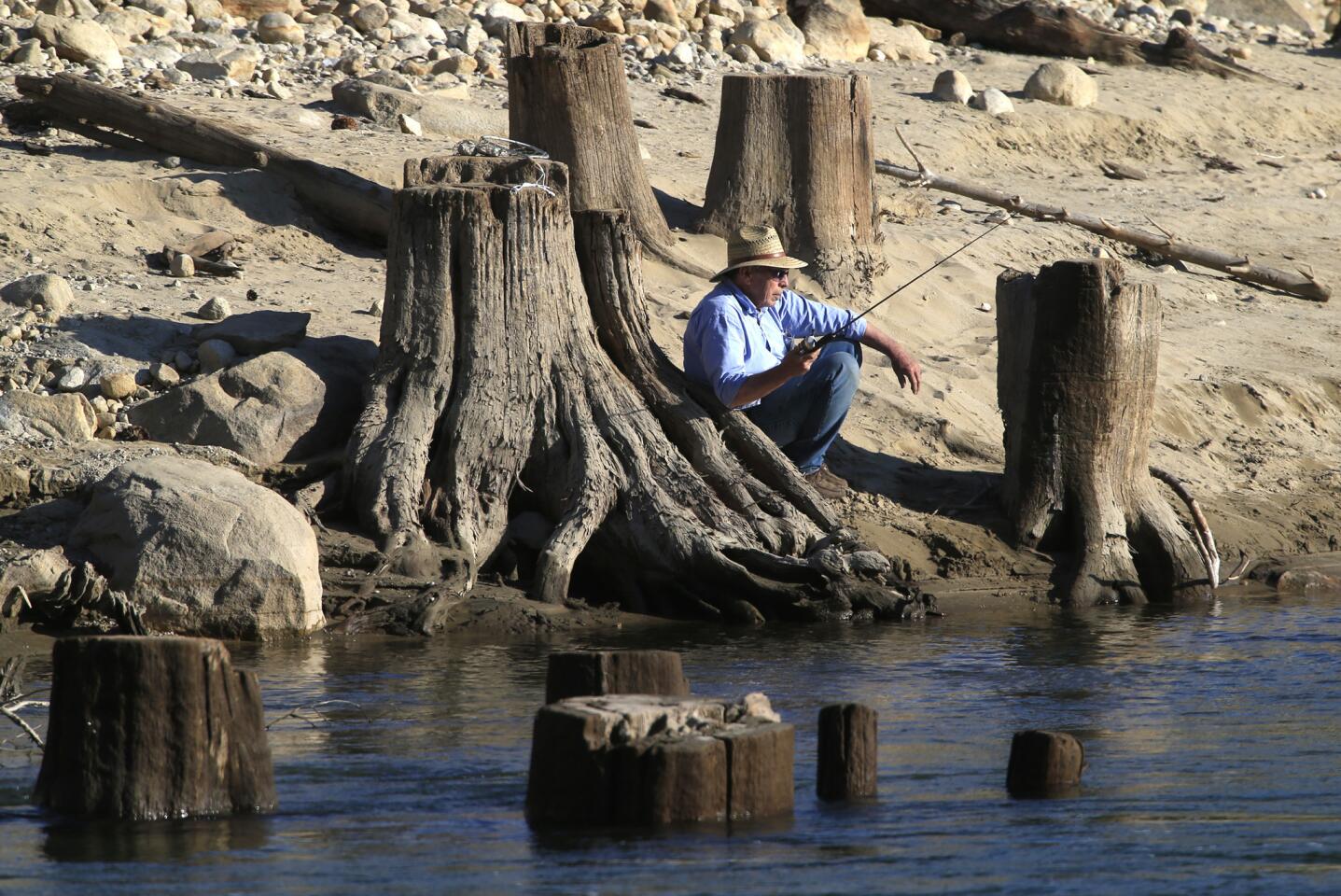
At least the fishing is great, one visitor observed, because there are the same number of fish in far less water. (Mark Boster / Los Angeles Times)
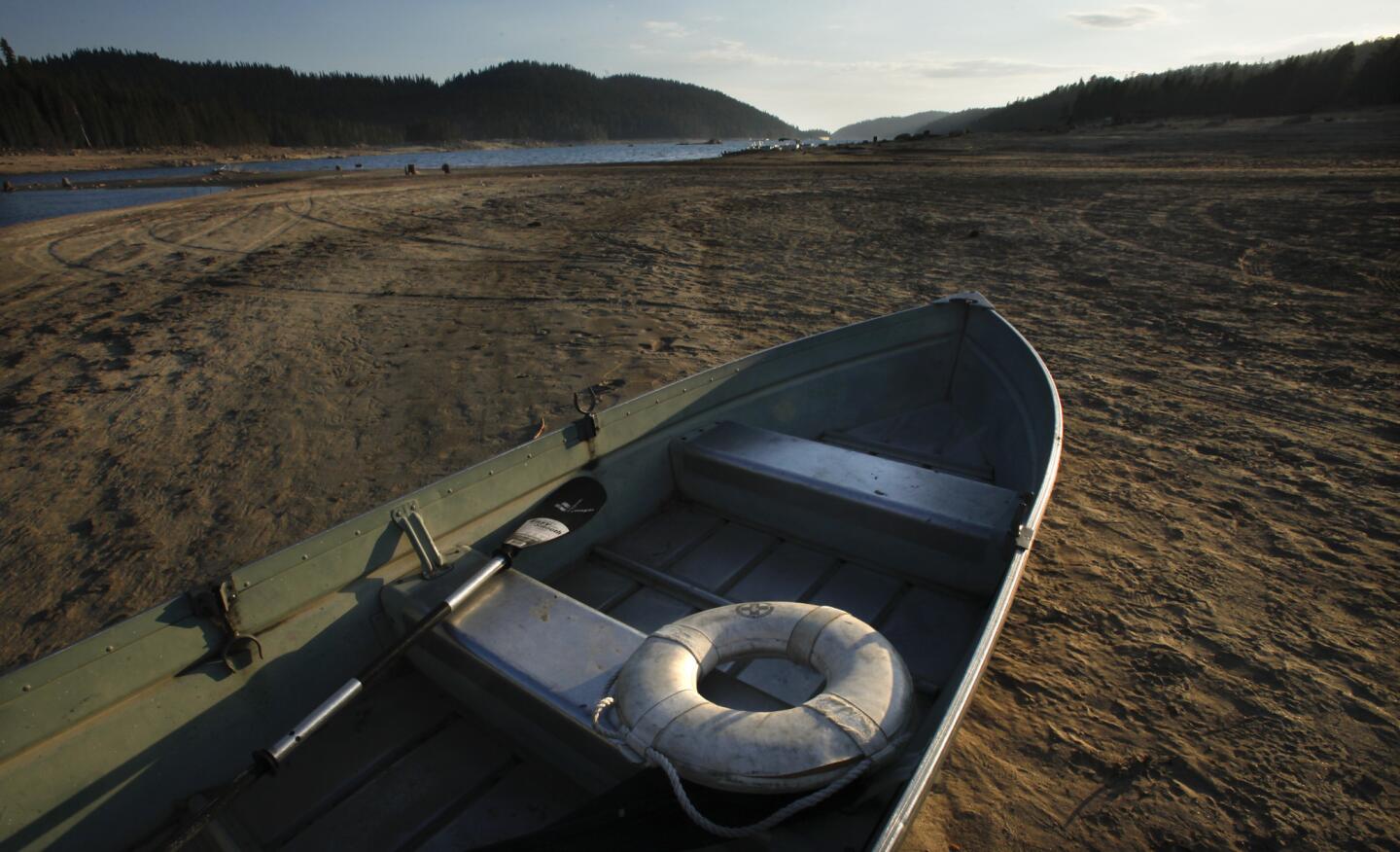
Boats have been left stranded on the sand at Huntington Lake, which usually hosts a busy regatta at this time of year. (Mark Boster / Los Angeles Times)
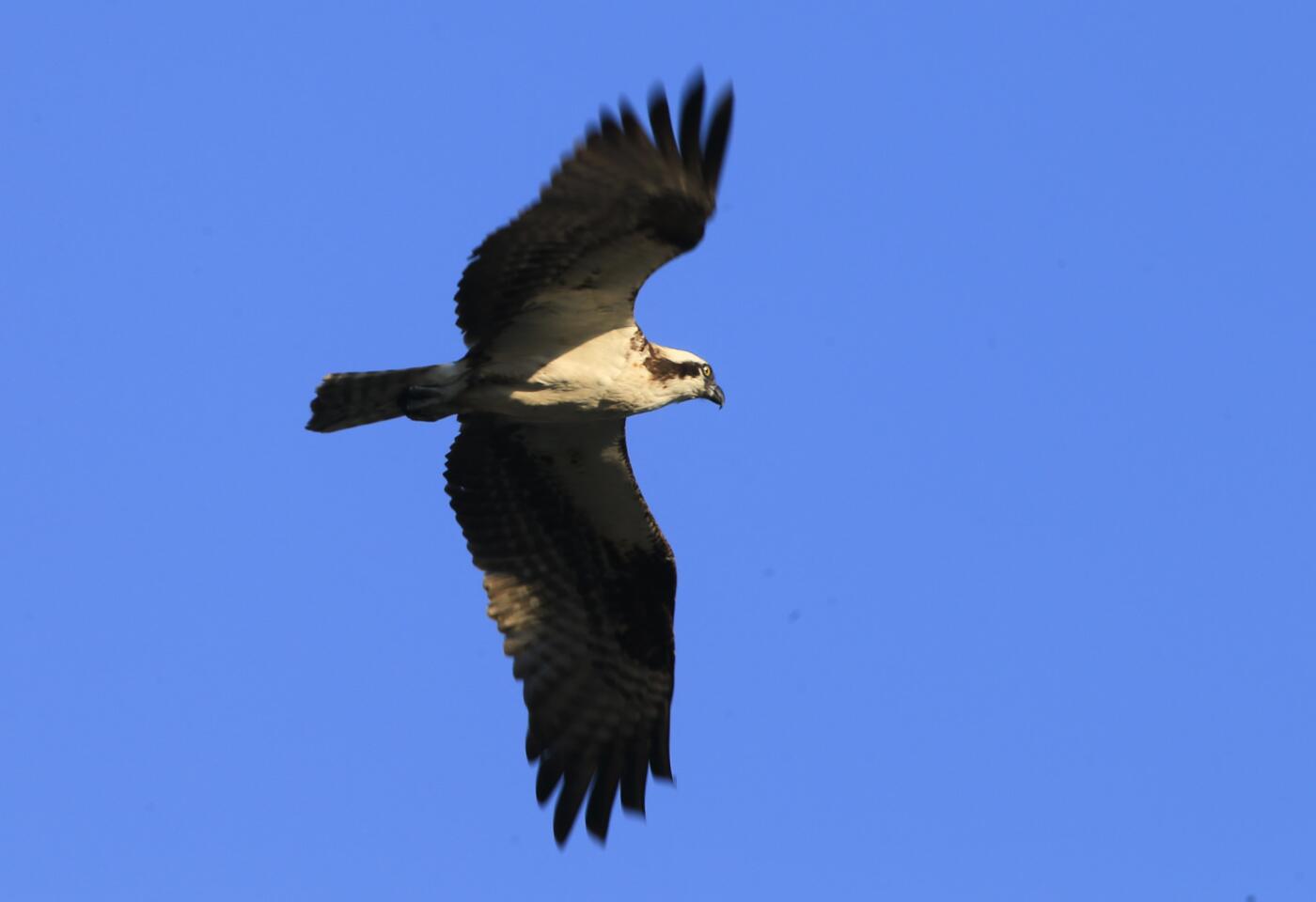
An osprey scans the shallow waters of Huntington Lake for an evening snack. (Mark Boster / Los Angeles Times)
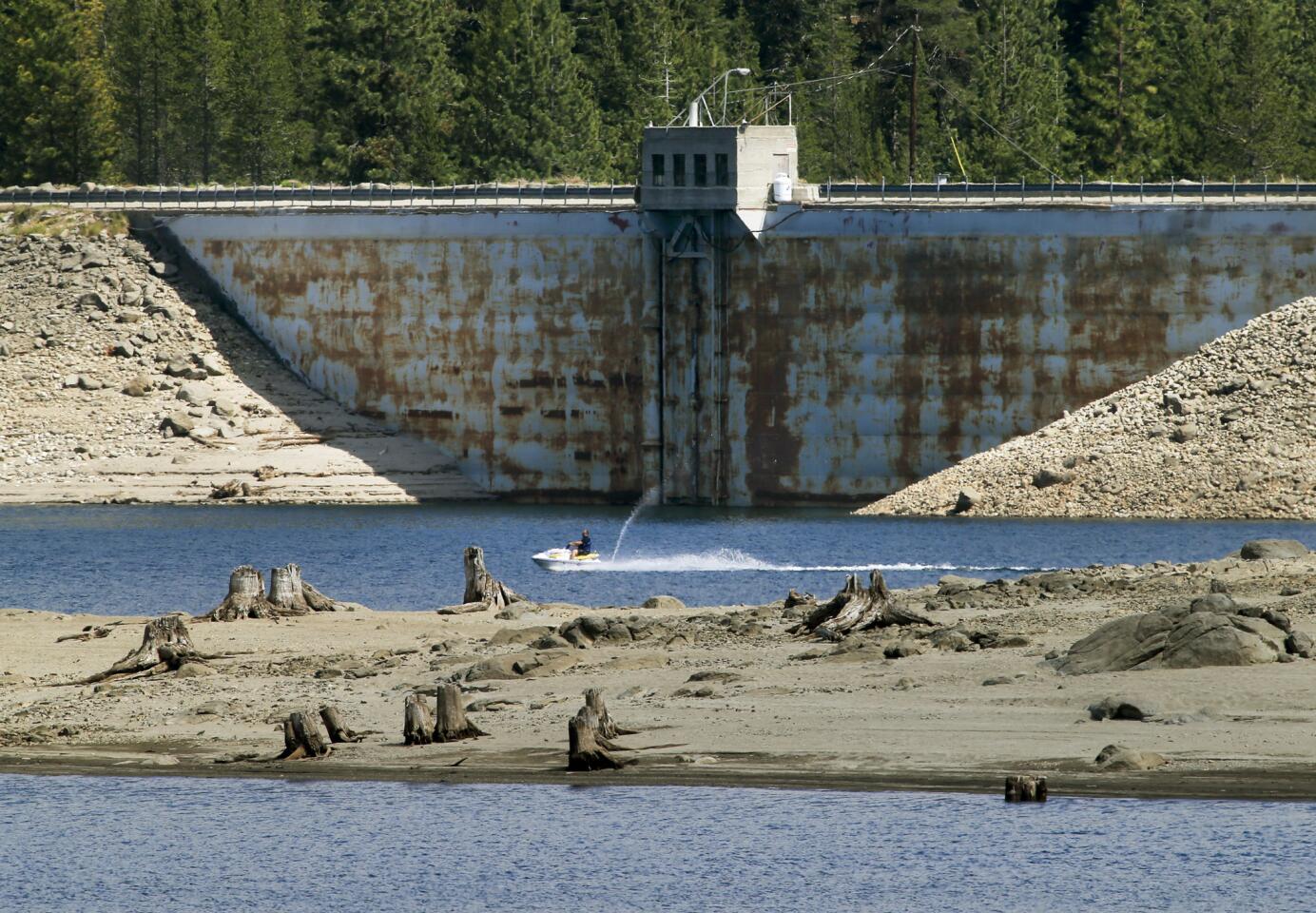
Huntington is actually part of a system of three lakes, six dams and 43 miles of tunnels driven through granite. (Mark Boster / Los Angeles Times)
Advertisement
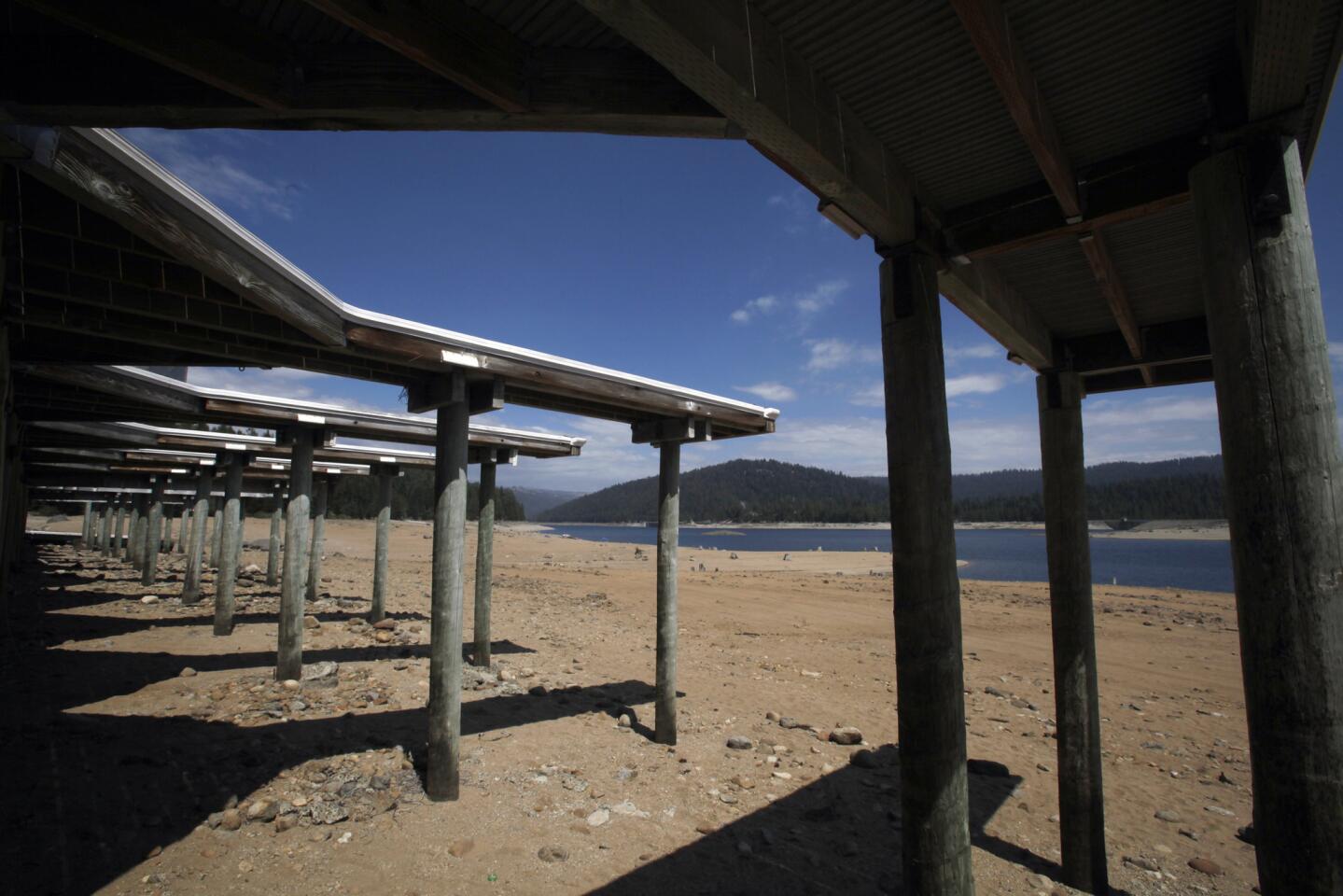
Docks on Huntington Lake in the High Sierra sit far from the current shoreline, limiting water activities. (Mark Boster / Los Angeles Times)
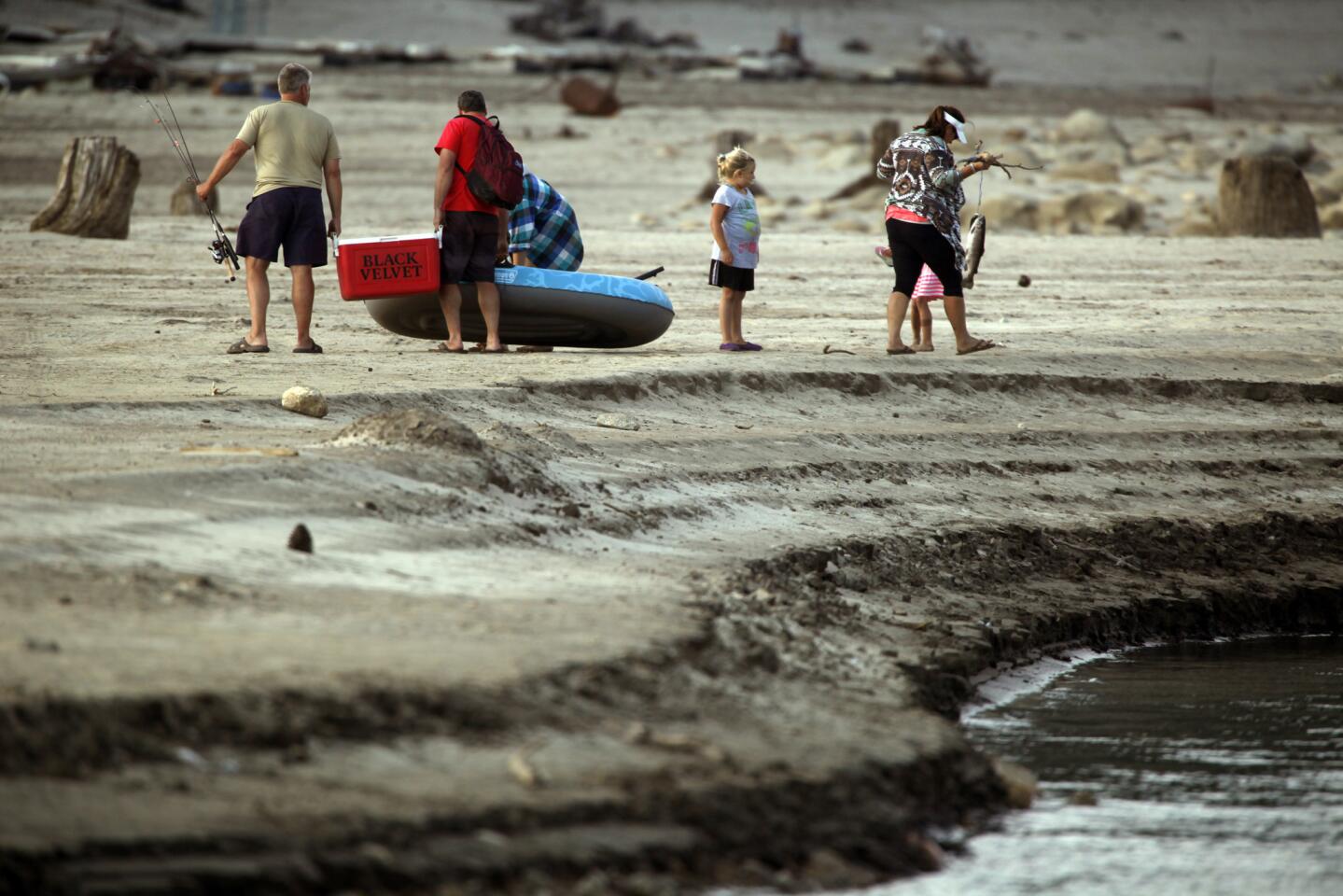
Families are still able to fish along the shrinking shoreline at Huntington Lake. (Mark Boster / Los Angeles Times)
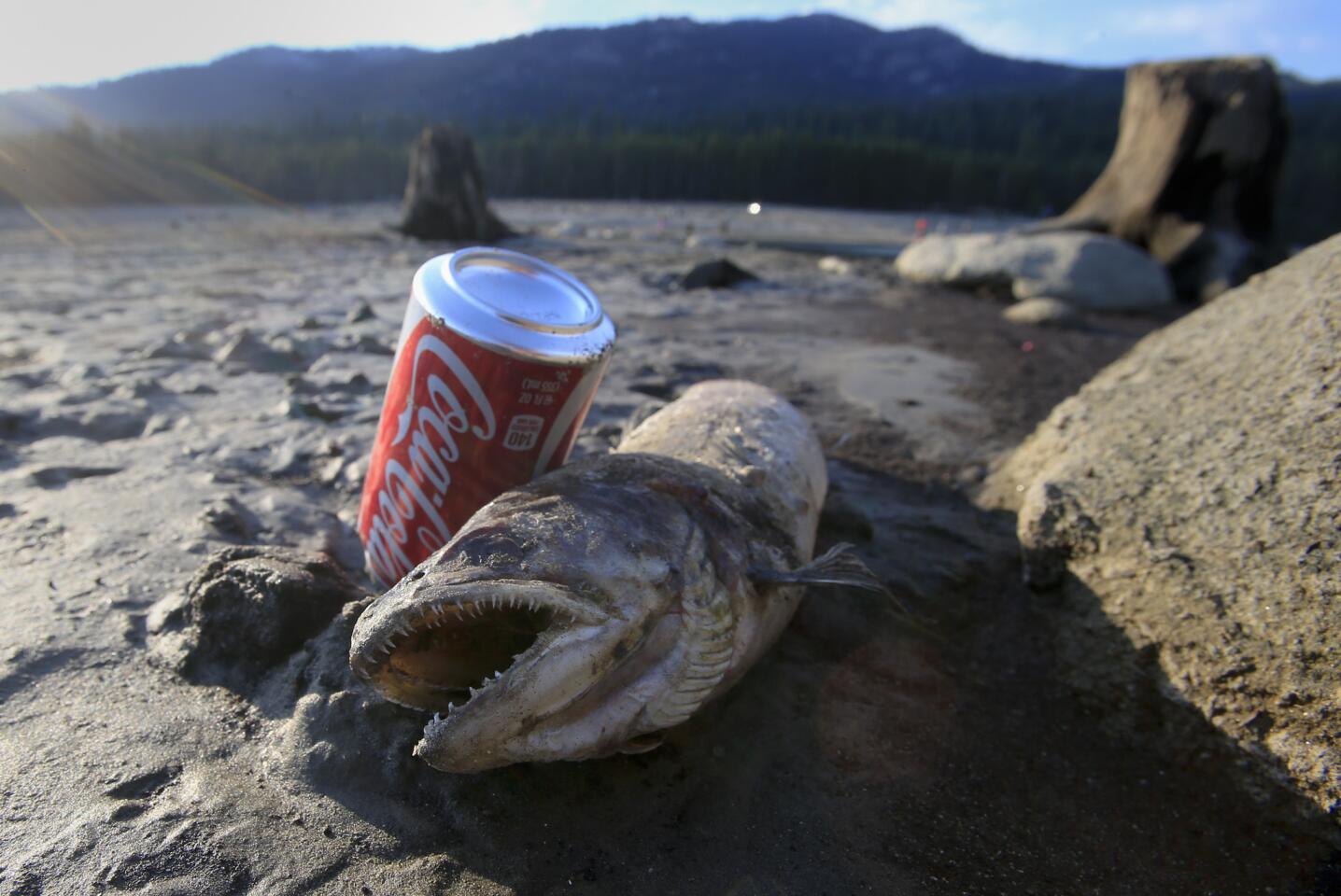
Human and animal litter on the shoreline at Huntington Lake. (Mark Boster / Los Angeles Times)
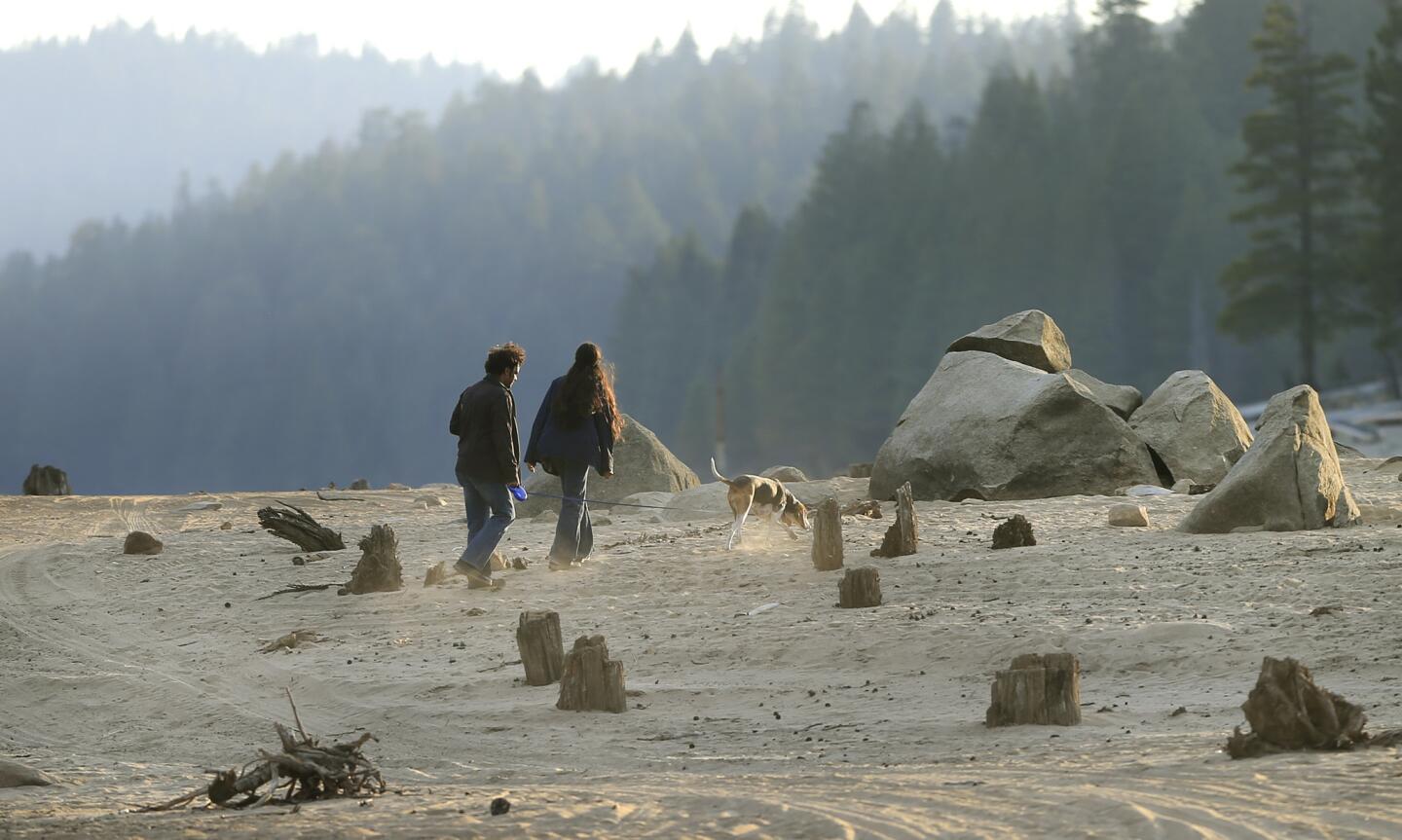
The dusty shoreline, usually under water, is better suited for strolling than boating now. (Mark Boster / Los Angeles Times)
